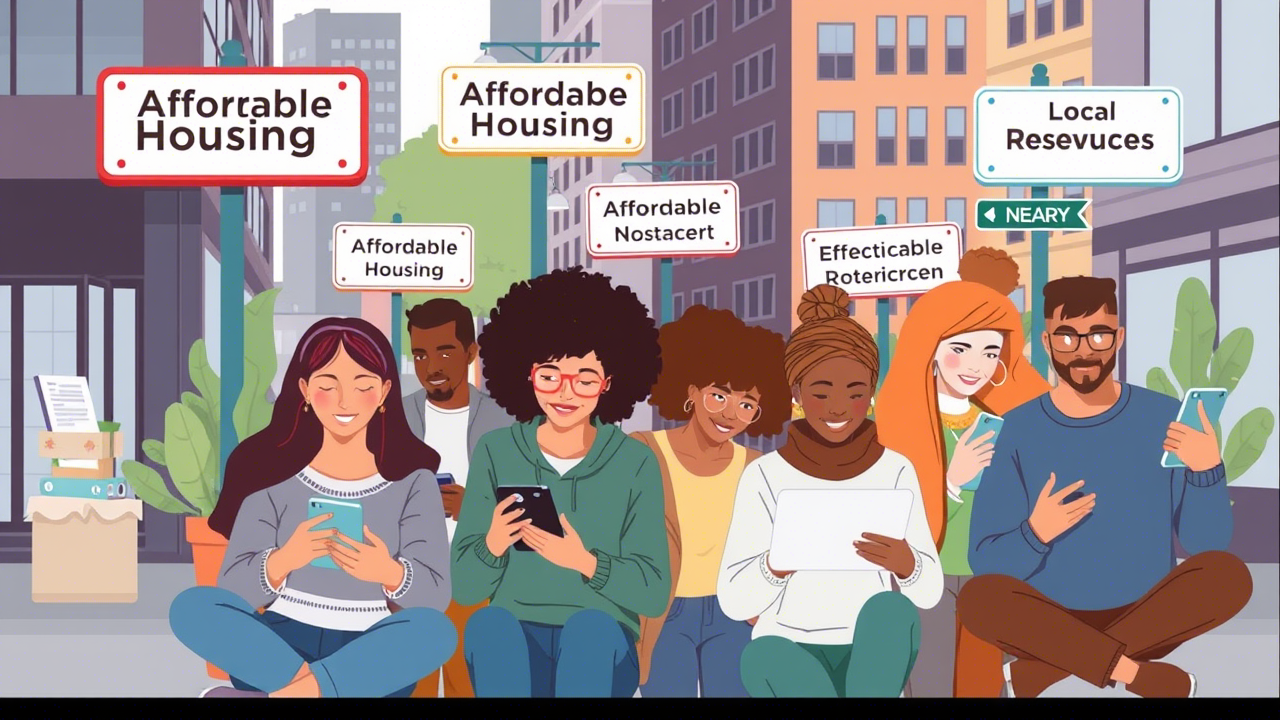Imagine a teacher not able to afford to live close to where he teaches. Or think of a family always worrying about being kicked out of their house. For too many, this is a reality. Affordable housing is an enormous issue. It cuts across people of all walks of life. So what is it anyway? Affordable housing, in simple terms, means housing that does not cost too much. It should be affordable for a person. He should be able to pay something left aside for other needs like food, medicals, and transport. It is about strike a balance.”
Understanding Affordable Housing: Beyond the Basics
Affordable housing is more than cheap rent. It’s about your home being affordable in view of your income. It’s about understanding income limits and how they apply to eligibility. It includes knowing about government assistance, or subsidies if you will. We get into better detail.
What Percentage of Income Should Go To Housing?
The 30% rule is something worth knowing. Basically, rent or mortgage fees should take not more than 30% of your income. In its application, 30% covers everything: rent, mortgage fees, utilities, and property taxes. If anything is paid above 30% of your income, at times it could mean you are in trouble, as expenses will accrue in itself, leaving hardly anything for other basic necessities. Nonetheless, the 30% rule applies differently to people, as some locations are way too expensive to be under 30% of the income earned; personal situations differ greatly.”
Income Limits and Eligibility
Eligibility for affordable housing requires that income be put into consideration. The government uses a standard called Area Median Income (AMI). AMI serves as a benchmark for being provided assistance. Different programs have different bases for income limits. These limits are all based on whatever AMI is. You may have heard terms like extremely low-income, then very low-income, and low-income. They refer to certain percentages of AMI. For example’s sake, let’s say low-income means below 80% of AMI.
What is Subsidized Housing?
The government provides subsidy assistance in making such housing affordable. These subsidies reduce the amount paid in rent. There are two main types; project-based, and tenant-based. Project-based subsidies would be those that remain with the property, while tenant-based stay with the individual. The tenant chooses his place of residence through Section 8 vouchers, and these are typically tenant-based. Subsidies are one large support group for affordable housing; they are a key component.
Find Out Why Affordable Housing Is Important
Affordable housing plays a key role. It offers more than a roof above people’s heads. It drives the economy. It enhances health and education. It also builds stronger communities.
Economic Stability and Growth
When housing is affordable, it ultimately is a benefit to the economy. Workers are able to live close to work. Local businesses acquire customers. The overall economy becomes better. If no such affordable housing exists, people find it harder to mobilize. So economic mobility dies.
Health and Education Outcome
Stable housing is linked to health and education. When people have a safe place to live in, health improves. Kids do better at school. Onelt present, homelessness and housing insecurity does have a negatively detrimental consequence on both physical and mental health.
Community Development and Social Equity
Affordable housing helps to create a mixture in the community. People from different backgrounds can live together. Therefore, it helps to remedy the damages of history. Everyone deserves a fair shot at opportunities. Affordable housing promotes these.
Types of Affordable Housing Options
There are many ways to provide affordable housing. One is public housing. Housing Choice Vouchers (Section 8) are available. Tax Credit Programs work on these. Let’s get into a little more detail on each.
Public Housing
Public Housing is property owned by the government. It is operated by local housing authorities. To qualify for public housing, certain requirements must be met. It comes with public stigma and challenges. Fundings forever have been a requirement.
Housing Choice Vouchers (Section 8)
Section 8 vouchers allow people to rent in the private market. You need to qualify for a voucher and then find a landlord who accepts one. It is a tough road for voucher holders. There are some landlords who discriminate against them. Also, there is not much on offer.
Tax Credit Programs (LIHTC)
The Low-Income Housing Tax Credit (LIHTC) program incentivizes developers to build affordable housing and grants them tax write-offs in doing so. Such projects find funding through investors who invest in these projects, which are professionally managed.
Challenges and Solutions in Affordable Housing
Making affordable housing can be challenging. Many challenges are getting in the way. One of them worth mentioning is NIMBYism. Funds are ever a problem. Policy and advocacy are equally relevant.”
NIMBYism and Community Opposition
This is a major NIMBY challenge. In most cases people oppose affordable housing in their neighborhood. They are concerned about property values. Or traffic congestion. The other key to this puzzle is education. A greater understanding of the benefits will go a long way with their communities.
Funding Gaps and Resource Constraints
Affordable housing projects urgently need funds. It is quite challenging to gather the needed funds. Innovative solutions come into play. Public-private partnerships shine. New financing models could also swim with opportunities.”
Policy and Advocacy Efforts
Policies matter. Some are complete importance. They make or break affordable housing efforts. Initiatives are already under way. Advocacy is still important.
Finding Affordable Housing: Resources and Tips
The process of obtaining affordable housing may feel daunting; however, there are resources to help. Knowing where to find them and how to apply can maximize your chances of success.
Government Agencies and Programs
The main federal agency is HUD-Housing and Urban Development. State housing agencies do exist. Each has the states to check eligibility, and so forth.
Non-Profit Organizations and Community Resources
Local non-profits also assist. They develop housing as an affordable handson.



